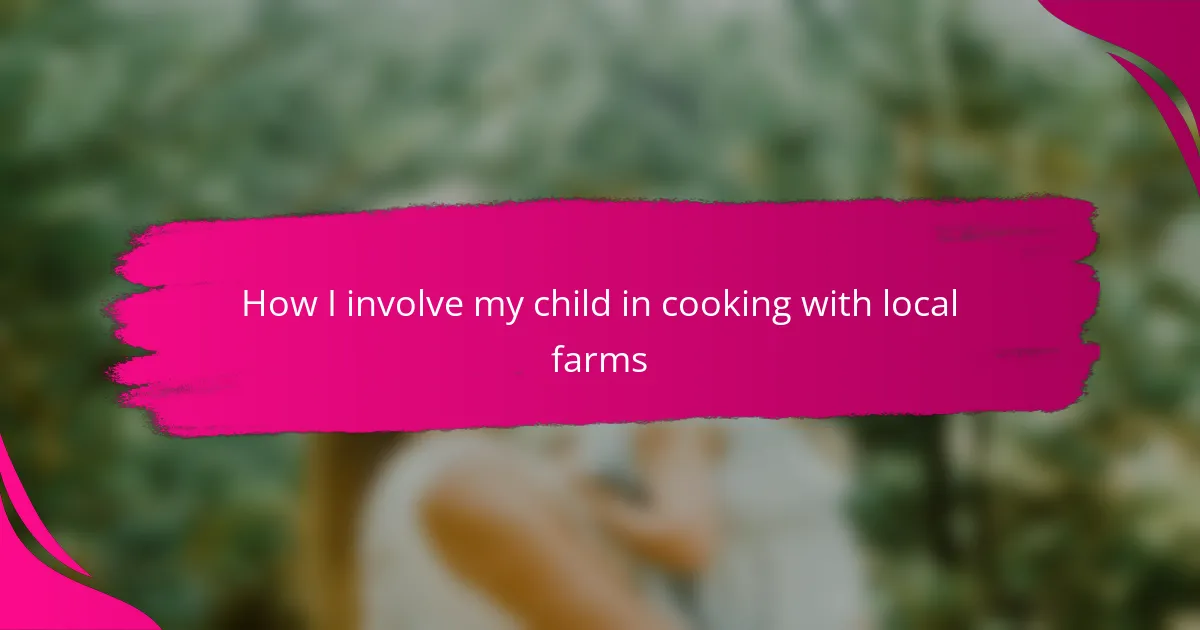Key takeaways
- Involving children in cooking fosters confidence, creativity, and essential life skills.
- Cooking with kids enhances their appreciation for food, especially when they see the journey from farm to table.
- Participating in picking farm produce creates excitement and engagement in the cooking process.
- Personal stories and hands-on experiences in cooking strengthen family bonds and make meals memorable.
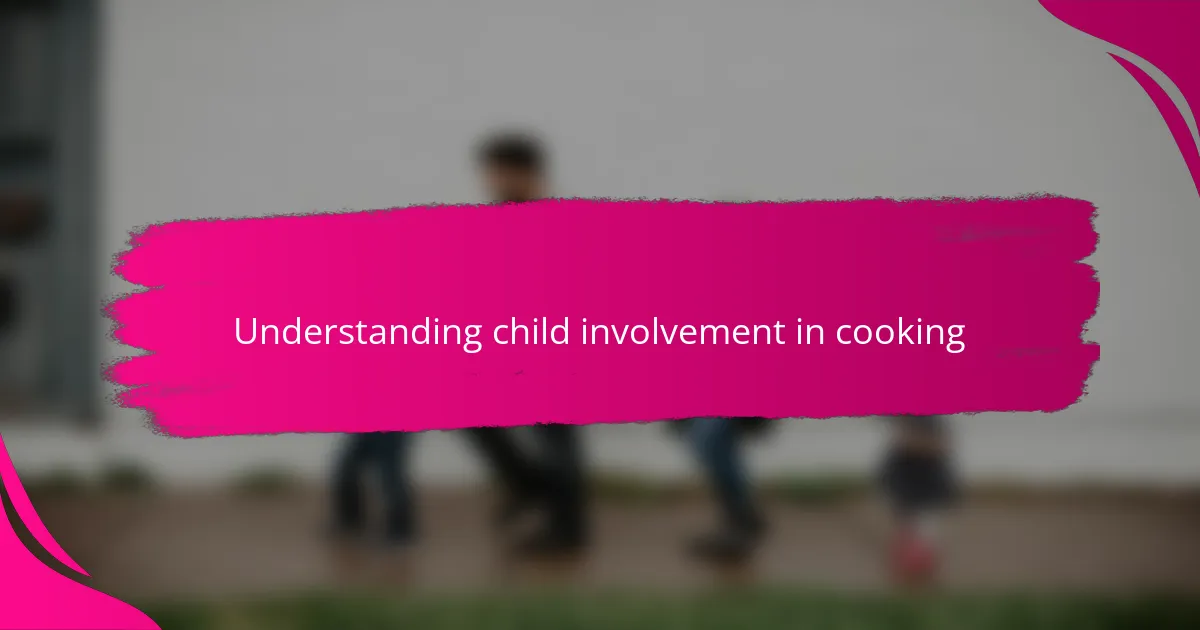
Understanding child involvement in cooking
When I first invited my child into the kitchen, I noticed how their eyes lit up with curiosity and pride. It made me realize that cooking isn’t just about preparing food; it’s about creating moments of connection and learning. Have you ever witnessed a child’s face when they realize they can contribute something meaningful to the family meal?
Involving kids in cooking helps build their confidence and fosters essential life skills like patience and creativity. From my experience, even simple tasks like washing vegetables or stirring a batter can make them feel valued and responsible. It’s amazing how these small moments can spark an ongoing interest in healthy eating and self-sufficiency.
I’ve also learned that understanding a child’s developmental stage is crucial to their involvement. Some tasks that seem easy to us might be challenging for them, but allowing room for mistakes turns cooking into a fun, stress-free learning process. Have you found that giving children age-appropriate roles keeps them engaged and eager to help? I certainly have, and it makes every cooking session more enjoyable for both of us.

Benefits of cooking with children
One of the biggest benefits I’ve noticed when cooking with my child is the boost in their confidence. Watching them take charge of a simple task, like measuring flour or chopping soft veggies, their sense of pride is palpable. Have you ever seen a child beam with accomplishment just because they helped create something delicious? It’s a powerful feeling for both of us.
Cooking together also opens a window into important life skills—patience, focus, and creativity all come naturally when kids are hands-on. I remember my child experimenting with different herbs from our local farm, proudly telling me which flavors they liked best. That kind of exploration is priceless and teaches more than a textbook ever could.
Plus, there’s something deeply rewarding about seeing a child connect with food and nutrition in a personal way. When they realize the meal started from fresh ingredients they picked or helped prepare, it sparks an appreciation for healthy eating that sticks. Have you ever noticed how kids suddenly get more excited about what’s on their plate after being part of the process? It’s one of those small parenting wins that make all the effort worthwhile.

Introduction to local farms for families
When I first explored local farms with my child, I was surprised by the magic that unfolded. Walking among rows of vibrant vegetables and meeting friendly farmers brought the food stories to life. Have you ever noticed how fresh air and nature make learning feel effortless and joyful?
Local farms offer more than just fresh produce—they open a door to discovery and connection for families. I’ve seen my child’s curiosity bloom as they touch a ripe tomato or smell fragrant herbs right where they grow. It’s a hands-on experience that books and screens simply can’t replicate.
Introducing children to local farms also creates opportunities for meaningful conversations about where food comes from. After a trip to our nearby farm stand, we’ve shared stories about the seasons, the hard work of farmers, and the journey from seed to table. Do you find that these discussions deepen your child’s appreciation for the meals you prepare together? For me, they’ve made the whole cooking adventure so much richer.
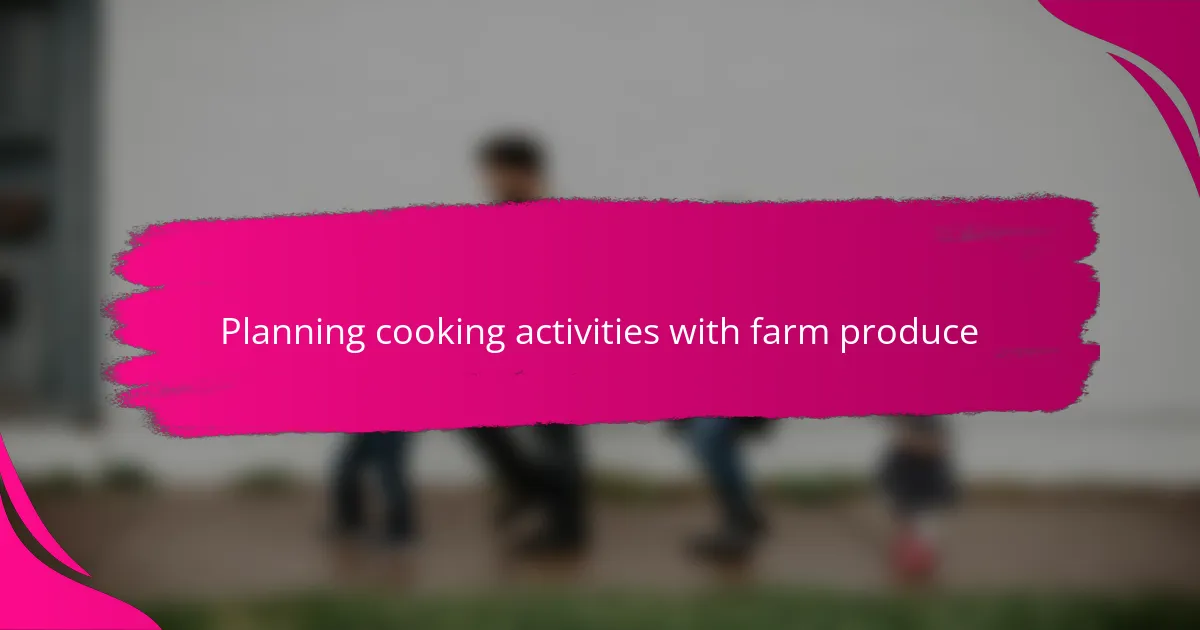
Planning cooking activities with farm produce
Planning cooking activities around fresh farm produce means thinking ahead about what’s in season and what catches my child’s interest. I’ve found that involving them in choosing ingredients at the farm stand makes the cooking feel like a natural next step rather than a chore. Have you noticed how kids get excited when they pick something themselves? That excitement often carries right into the kitchen.
Sometimes, I take out a simple recipe inspired by the week’s local harvest and lay out the ingredients together. This way, my child can see how each item will transform and be part of the story we’re creating. It’s amazing how a bunch of freshly picked carrots or herbs can spark so many questions and ideas—do you think your child gets curious about how flavors work?
I also try to plan activities that match my child’s abilities and attention span. For example, peeling and washing greens or smelling fresh basil are easy tasks that build their confidence and keep them engaged. Have you ever noticed how a little involvement can make even the simplest steps feel like a big accomplishment? It’s those moments that truly make cooking with farm produce rewarding for both of us.
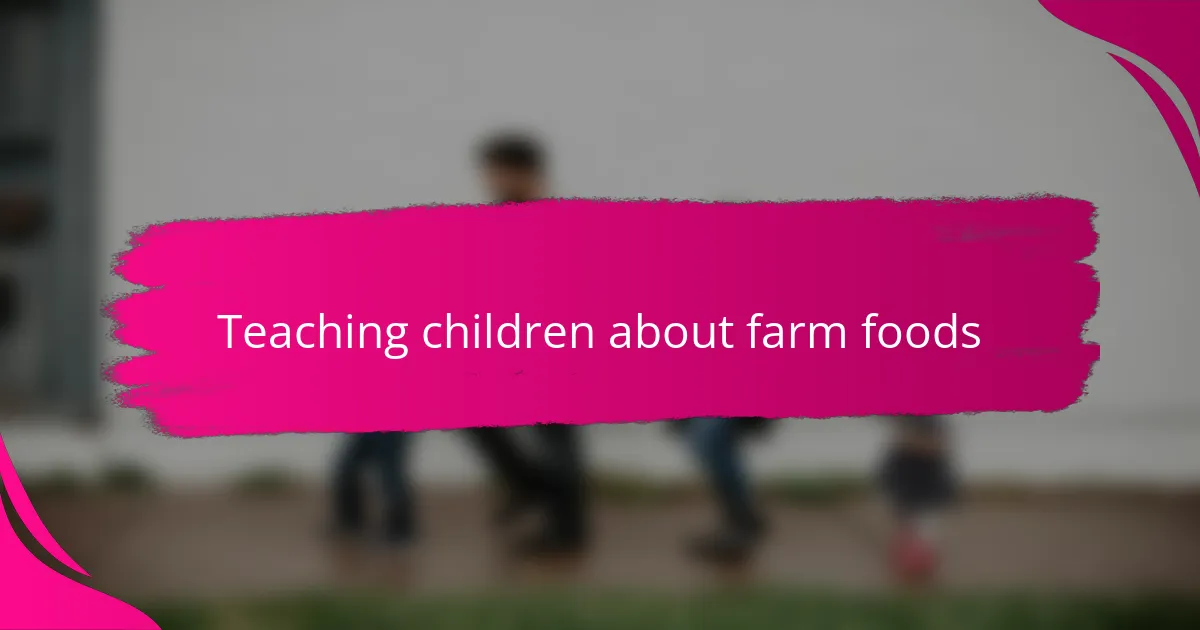
Teaching children about farm foods
When I introduced my child to different farm foods, their curiosity was immediate and infectious. Touching a freshly harvested potato or tasting a sun-warmed strawberry became little adventures that sparked endless questions. Have you ever seen that moment when a child connects a colorful carrot on their plate to the earth it came from? It’s pure magic.
I’ve found that explaining where food grows helps my child appreciate every bite in a new way. Describing how leafy greens grow in rows or how bees help pollinate fruits brought a familiar meal to life. Do you think that knowing the journey from farm to table makes kids more eager to try new flavors? From my experience, it definitely does.
Sometimes, we even pretend to be farmers at home, sorting our “harvest” from the market or helping plant seeds in our small garden patch. These hands-on moments go beyond cooking—they teach responsibility and respect for our food sources. Have you noticed how these simple acts strengthen your child’s connection to healthy eating? For me, it’s a rewarding part of parenting that feels both natural and nurturing.
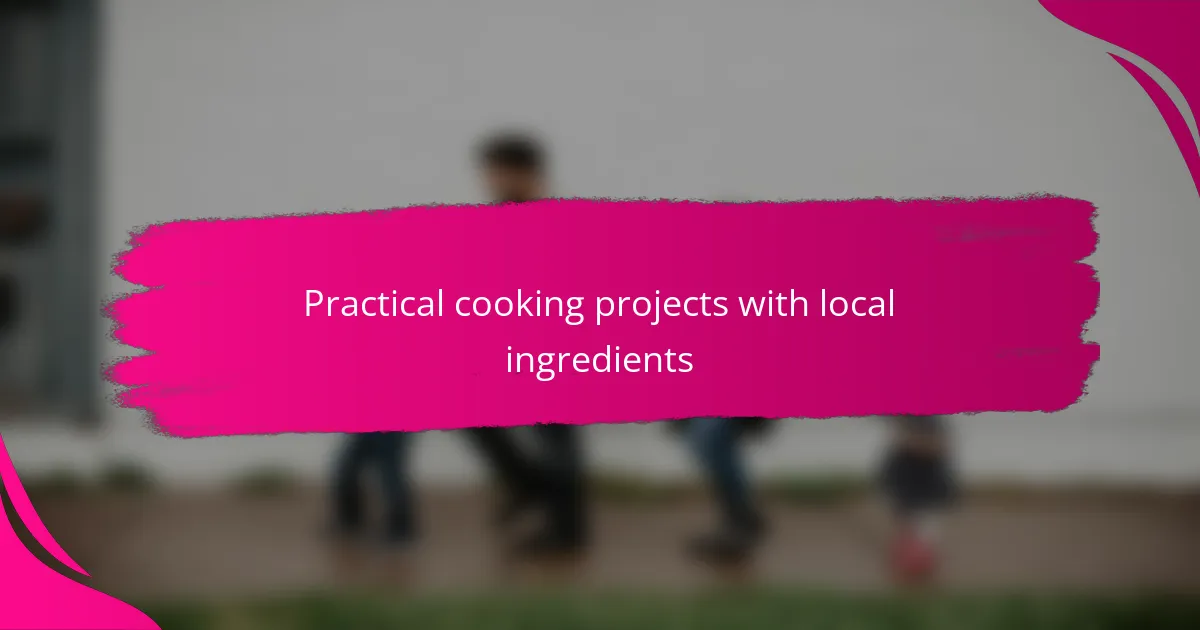
Practical cooking projects with local ingredients
When I plan cooking projects with local ingredients, I love to start with something simple, like a crisp salad made from fresh greens and radishes we picked just the day before. It’s amazing how my child’s excitement grows when they realize that the crunchy, colorful vegetables came from a nearby farm—there’s a real sense of pride in putting those ingredients together. Have you ever seen a child’s eyes light up when slicing into a tomato they helped choose?
Sometimes, I challenge my child to create a meal using only what we find at the market, turning cooking into a little adventure. I remember one afternoon when we made homemade pesto from basil and garlic we picked freshly; watching my child crush the ingredients and smell those bold flavors made the whole kitchen come alive. Don’t you think these hands-on experiences make food more meaningful and fun for kids?
I also like to build projects around favorite seasonal produce, like roasting a batch of sweet potatoes or making berry muffins with fresh-picked berries. Giving my child small tasks like stirring the batter or arranging the fruit makes them feel like a true chef, and the joy on their face when tasting their creation is priceless. Have you noticed how working with local ingredients not only teaches cooking skills but also creates stories your child will remember?

Sharing personal experiences in cooking together
One of my favorite moments in cooking with my child is when they proudly share their own little cooking stories—like how they carefully picked a tomato at the farm and then helped turn it into sauce. These personal experiences make cooking feel less like a task and more like a shared adventure. Have you ever noticed how a simple story behind an ingredient can turn a meal into a memory?
I remember a time when my child eagerly recounted how they got to wash the freshly harvested greens, their fingers still damp and smelling of earth. That sensory connection brought a deeper appreciation for the food we prepared together. Isn’t it amazing how these tactile experiences can make kids feel closer to what they eat?
Sharing cooking with my child has also revealed their growing curiosity and sense of pride. Sometimes, after a session, they’ll ask thoughtful questions about the flavors or the farm where the ingredients came from—questions that spark meaningful conversations. Have you found that these moments open doors not just to better meals, but to stronger bonds? I certainly have, and it’s those connections that keep me coming back to the kitchen with my child.
